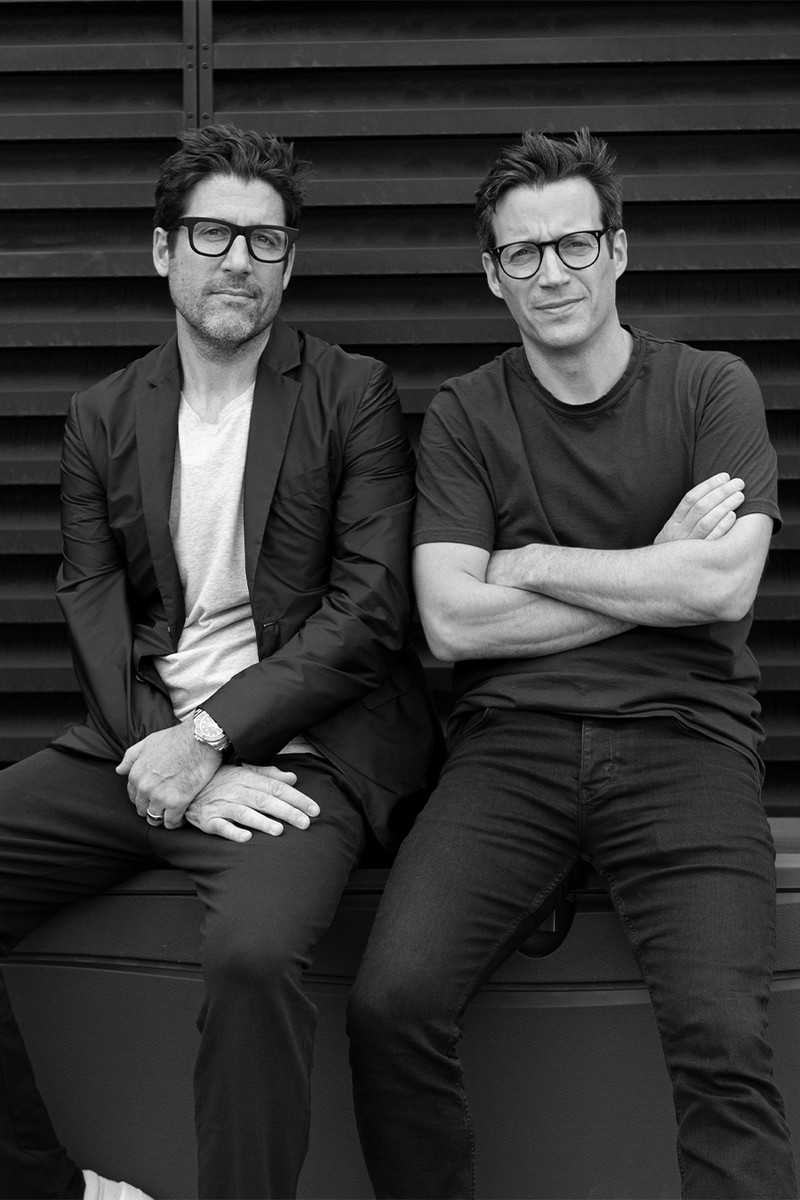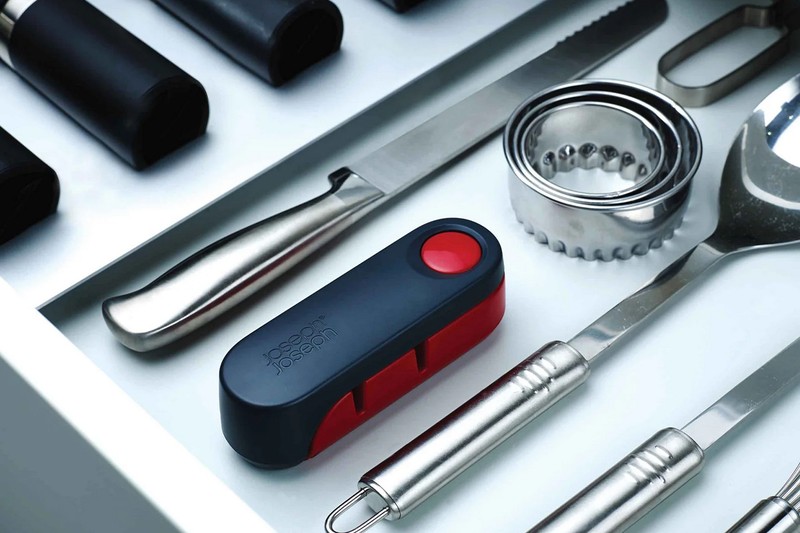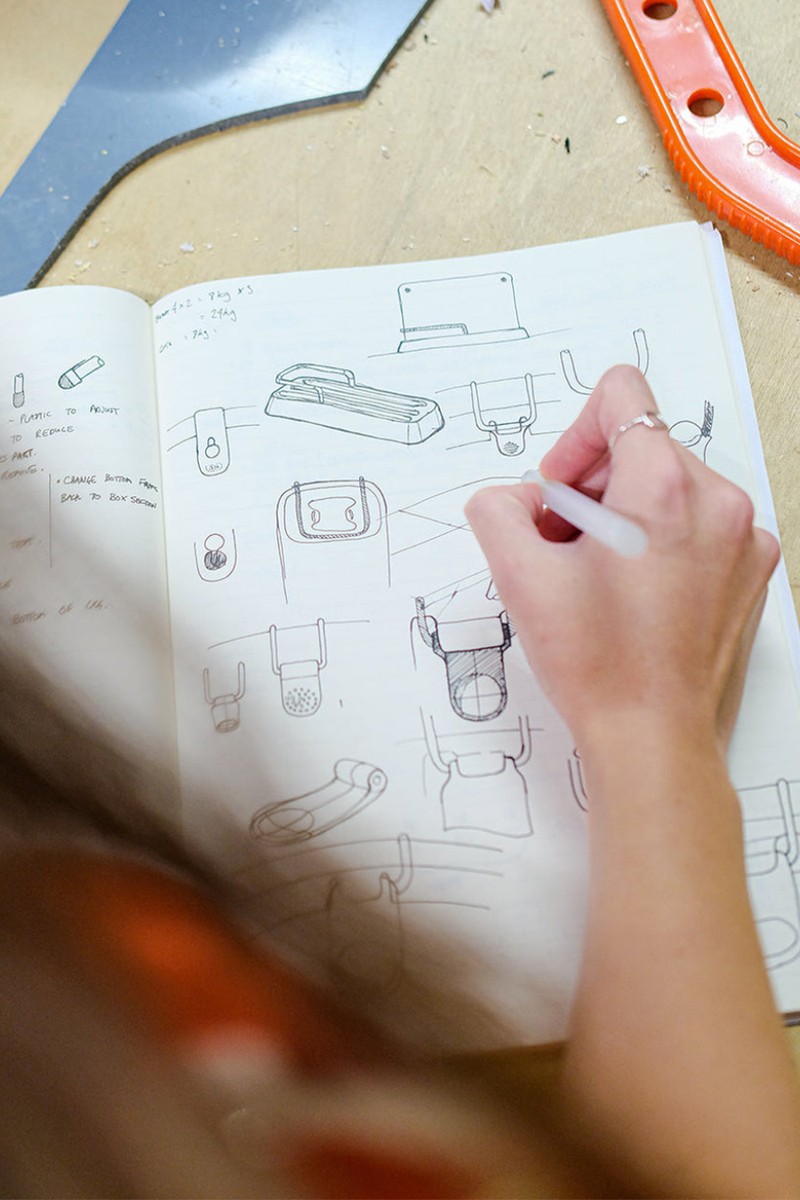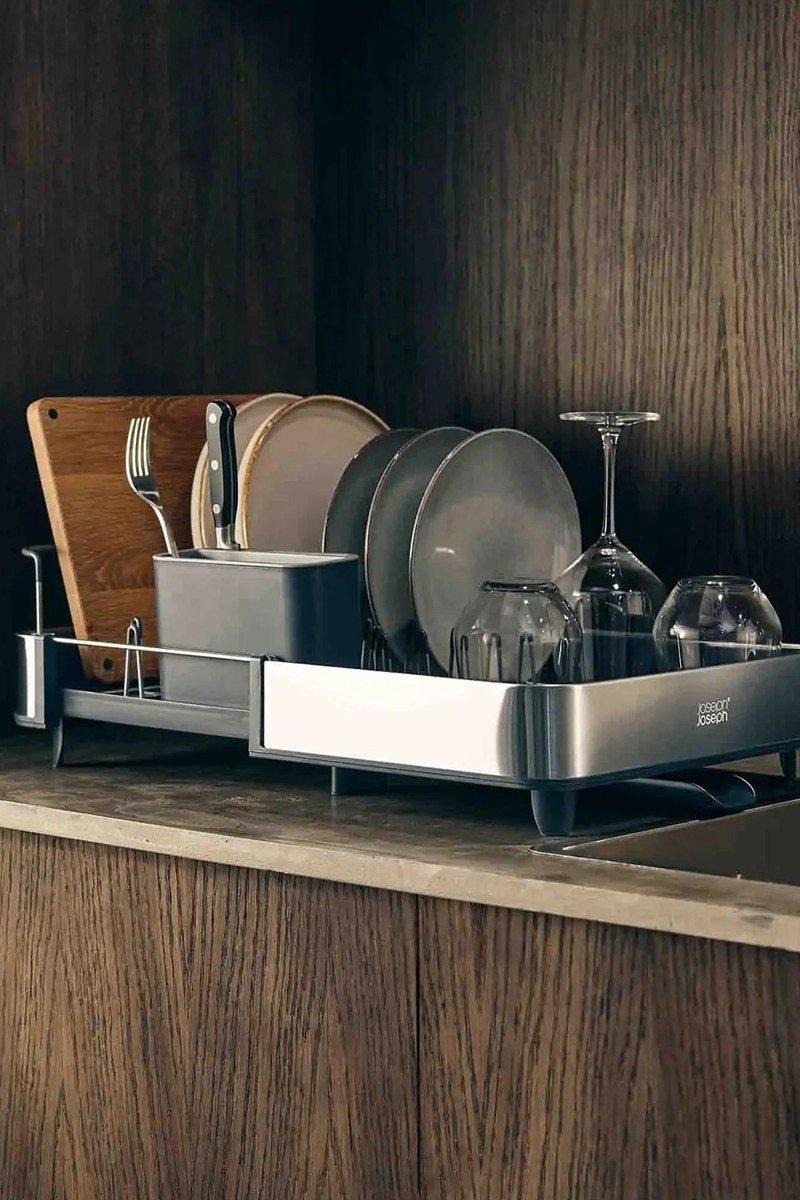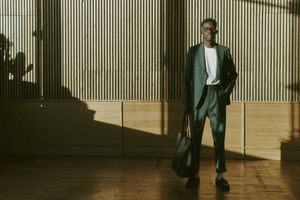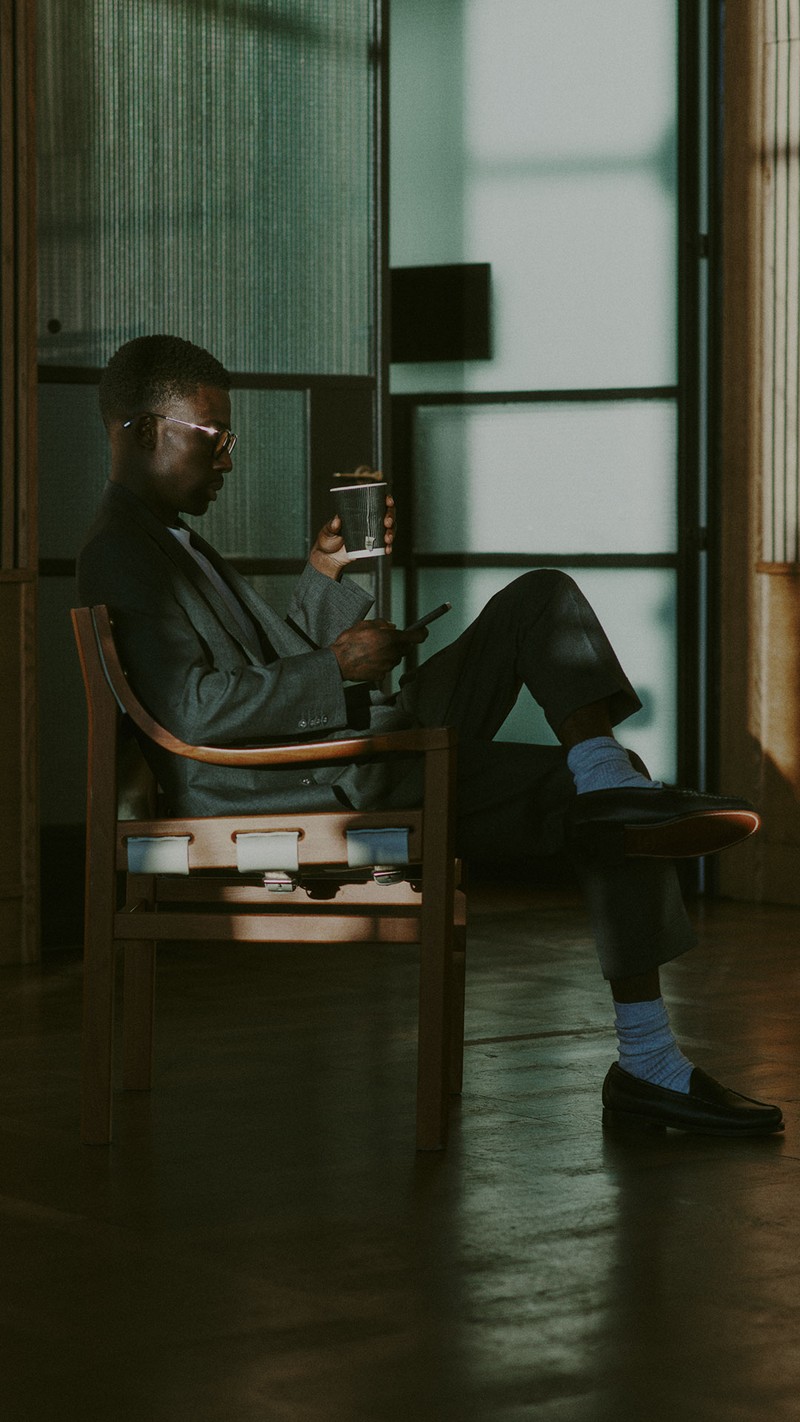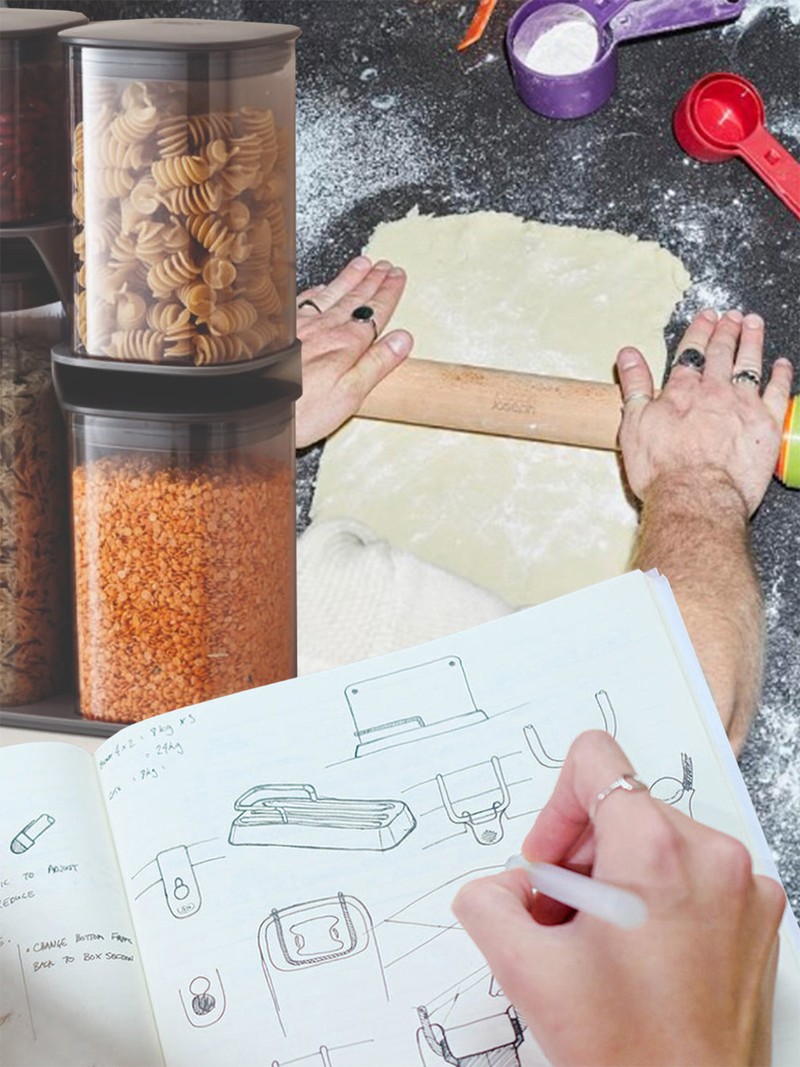
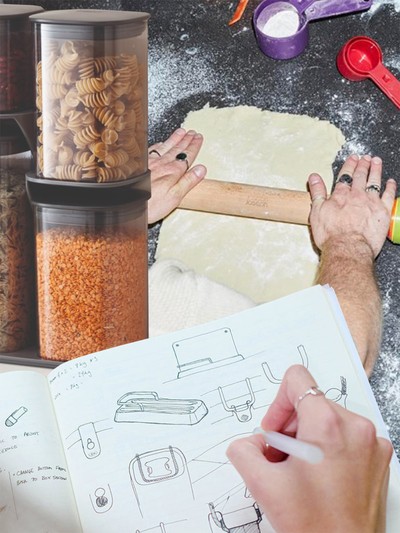
The CEO Series: Antony & Richard Joseph Of Joseph Joseph
We’re from Birmingham, where our dad had a glass business that he set up in the 60s. It made glass components for other companies’ products, like car mirrors and glass hobs. In the 80s, he was on a business trip in the US and came across these glass worktop savers – huge chopping boards you could use to protect your kitchen work surfaces. The nice thing was you could decorate the back of them. So he started producing something similar over here, working with a photographer to create interesting designs. One day, he asked us if we wanted to get involved with creating the designs. We said, ‘No thanks, Dad!’ Fifteen years later, we’d both finished our degrees in design and were very into product development. We asked a friend of ours to create some designs for the backs of the chopping boards then took them along to a trade fair at the NEC in Birmingham. They were a runaway success. We had big orders from all the department stores – one placed an order for £30,000 – so our father was proven right.
As twins, we went through school side by side, then went our separate ways at college. Antony went to Central St Martins and Richard went to Loughborough to study industrial design. After college, we had five years where we went off and did our own thing, then came back together for the chopping boards, while we both had other jobs. After that huge order, we quit those jobs and came together.
It wasn’t success after success in those early days. Our next venture was glass clocks. Then mugs. All made in dad’s glass factory. The glass chopping boards were doing well; the rest wasn’t doing great. We bubbled along for about three years. Then we began to look at other materials – which is when things started going right. We decided everything we launched had to have a purpose and a point of difference, and not be too expensive. We had four or five successes back to back. Then our stockists told us that, as we had a bit of a collection going, they could put the Joseph Joseph name above our products in store. That really helped to solidify us as a brand – and it went from there.
Our focus is always, ‘How can we make this work better?’ At the start, we obsessed about designing the best chopping boards anyone could buy. We knew they were functional products and every household had at least one, so we wanted to be the guys designing the best chopping boards available. That obsessive focus has stayed with us in everything we do and has been a key part of our success. We approach every design innovation with the same formula, looking at tasks in the home and understanding what the problems are with those tasks, and how we create products that can do better.
We’re always looking to create something that doesn't need an instruction manual to explain it. The understanding of the product has to be instant. We call it the ‘delight factor’ – when you see something in a shop and immediately need it. Of course, we try and do that with all our products, but we probably fail on about 70% of them, which is normal.
Our strapline is about being ‘the home of brilliantly useful design’. Our products are functionally useful, but also visually brilliant. And we've been quite successful at the marriage of functionality and aesthetics. Twenty years ago, Le Creuset was big on colour in kitchenware, but other than that, it was all a bit plain. One of our early designs – the folding chopping board, Chop 2 Pot – launched 17 years ago. It’s still one of our best sellers today. Someone else made it first, and they dropped it because it wasn't selling. They called it the No Spill Chopping Board over in the US. We bought it and changed the handle to make it a more comfortable. But the key was, we did it in four bright, primary colours. And they’ve never been out of stock since. We’re known for our lime green designs, though colour always comes secondary to the functionality.
The Chop 2 Pot was the first product that was just simple problem solving. That was a blueprint for what our business was to become. We still use it as a benchmark against which to judge new products. You know, is it as easy to understand as a chocolate bar? Can you show off what it does in just two images? Sometimes, the communication part of a launch is just as important as the product’s purpose.
It takes a minimum of 18 months to get a product from idea to the market. That would be for a whisk or a set of spatulas, something quite simple. Cookware is more like three years. A lot of that is testing – from food safety testing to getting all the different market requirements from around the world. In terms of design, we follow quite a clear process for identifying the ‘problem’ that needs solving. And we're quite strict on delivery, otherwise you could go on refining forever. We've got one guy whose whole job is being is very strict about making sure the teams deliver on time.
We’re always trying something new. Last year, we got into cookware. Before, we were always about kitchen storage, like our Nest bowls which free up space in a cupboard. This had to take a similar approach. We wanted to launch something where storage came into it, so wondered whether we could create a set of pots with premium versions of folding camping pan handles, that locked off, were safe, had a long life and could go in the dishwasher. A lot of thought went into the final product, and we were pleased with the result. You’d be really surprised at how many concepts we look at when designing a new range. Across the whole business, we've launched about 1,000 products so far. We've probably looked at over 100,000 concepts to get there.
One of our biggest challenges – pandemic aside – was opening up our distribution very early on in the business. We initially struggled to sign up lots of retailers in the UK. Our dad encouraged us to do a trade show abroad, and try and meet distributors and stores from other countries. Quite early on we signed up to distribute in Japan, quickly followed by Germany. So we’ve always had a part export business and have had big successes in Japan over the years. Today, the US is our biggest market. But it’s different to the UK, with different needs. They have different sizes, for example, for measuring jugs – they use cups and ounces, not grams – so we have to have different skews and packaging for that US. But we’ve always enjoyed being sold there. Early on, we were stocked in the gift store of MoMA in New York, which gave us kudos over there.
It never gets old, walking into someone’s house and seeing one of our products. That's a nice experience. The same if we’re abroad, in the middle of nowhere, and we walk into a shop and there's a display of our products. We've also won quite a few design awards over the years. I wouldn't say there's one big high, but there's lots of little markers of success we’ve seen over the years.
People always ask us what it’s like working with your twin. It’s been more than 20 years and it's much easier now than when we started the business, when there were just the two of us in an office in the Oxo Tower. We’d question, ‘What are we doing? What are we doing next?’ and always be in business discussions or disagreeing with the council. Things have changed since we brought new people into the business. Within two years, we hired our first sales guy, who still works for us in the US. As soon as we started sharing the responsibility, the roles became better defined. And now, we never fall out and we have massive respect for each other. These days, we’re separated by different floors in the building – Antony is on the product floor, and Richard is one the business floor. We might not see each other for a week. We've got two sisters who are architects, there’s another set of twin brothers in the family who work together, Mum was an architect and Dad was in manufacturing. So when we’re all together, all we do is talk shop.
We’re very proud of our toilet brush. There are plenty of brands that make them, so we wanted to see if we could come up with something different. We did. We have a hydrophobic moulded bristle, which means nothing can stick to the brush, so it’s much more hygienic. It’s called the Flex 360. We then did it in lots of colours and shapes. A few years back, we were given a Queen's Award for Enterprise. The Princess Royal came to our offices to present it to us. We gave her a gold-plated toilet brush to say thank you. When we gave it to her, we said, ‘Every throne should have one’ – and she laughed. She had a big Bentley and a police escort. They opened the boot, put the toilet brush in, but they didn’t get it in properly and when they slammed the boot, the golden toilet brush was sticking out. But she went home and ordered £1,500 of stuff from us. So we’ve got the royal seal of approval.
Visit JosephJoseph.com
All products on this page have been selected by our editorial team, however we may make commission on some products.
DISCLAIMER: We endeavour to always credit the correct original source of every image we use. If you think a credit may be incorrect, please contact us at [email protected].
